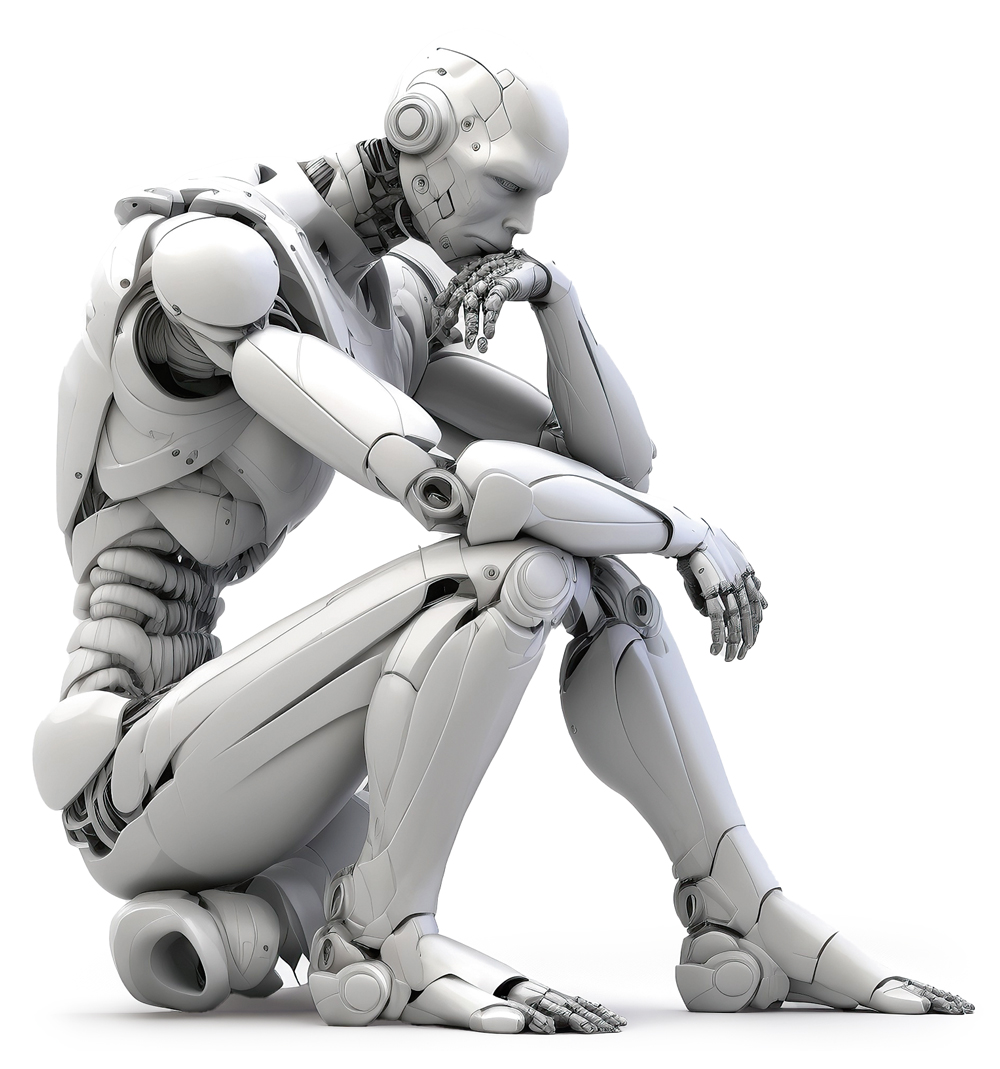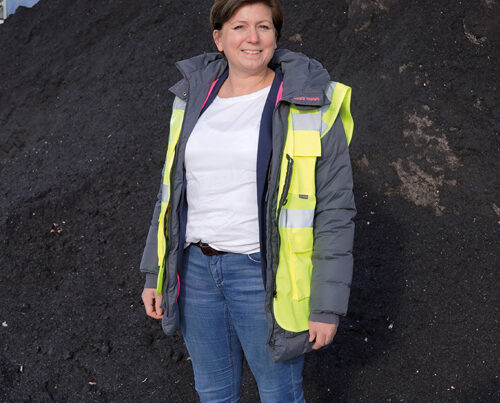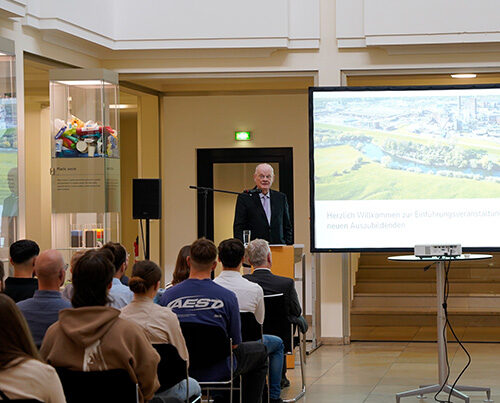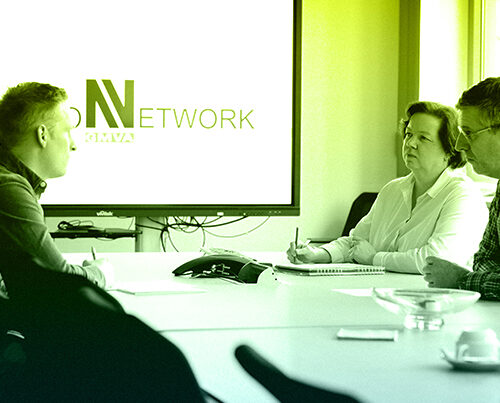There has been much media hype about the subject of artificial intelligence, aka AI. Rarely does a day go by without a newspaper, blogger, TV channel or radio station issuing pessimistic warnings about the dangers of AI. Based loosely on the Terminator franchise or the legendary HAL9000 from Stanley Kubrick’s ‘2001 – A Space Odyssey’, people are predicting that AI will, at best, supersede humans and their jobs or, at worst, spell the end of humanity. Perhaps the first thing that we should do is to ask ourselves just how smart our colleague the computer has really become. The results are generally disappointing and sobering. More often than not, AI muddles up people or gives them a position they simply don’t have. It certainly seems as if every other managing director has been appointed board chair. Asked detailed questions about the circular economy in Germany or abroad, AI comes up with interchangeable generalisations that are certainly well formulated but hardly robust statements. And the database of this supposed intelligence is from 2021 for the moment. It’s still being tested and we’re still learning.
Of course, we shouldn’t underestimate the risks. Especially when it involves deepfakes such as fake photos or videos that provide conspiracy theorists, divorced from reality, with the supposed proof they need to become yet more radicalised in their parallel universes. It is alarming today, even without Chat GPT and its counterparts, just how carelessly unproven and unprovable content on Facebook, Telegram and other social media platforms are taken at face value by so many undiscerning users.
Unfortunately, the public discussions about AI have overshadowed the question of its long-term benefits for the economy and, as a result, for the circular economy. To shed some light on the subject for our readers, RE:VIEWS contacted Dr Aljoscha Burchardt from the German Research Center for Artificial Intelligence in Berlin, one of Germany’s leading AI experts, and asked him to contribute as a guest author.
The following piece is a translation of an article written by Dr Aljoscha Burchardt that first appeared in the German Rotary Magazine in April 2023.

Today’s challenges
This piece is supposed to look at what artificial intelligence (AI) can, or rather, should do for us. But let’s look at things in the right order … let’s start with the dystopia and consider the situation today. There are two million vacant positions in Germany, a number that is steadily growing. The skills and labour shortages are already having a major impact on the German economy, administration, healthcare, education etc. The strategy adopted by the German government to tackle the skills shortage does not raise much hope either. Our public sector administration is dysfunctional and will soon be hit by a retirement wave. An estimated 30% of public sector staff will have retired by 2030. Affected by international crises, global supply chains have proven to be less reliable than people had hoped.
And then we could also bring up the subject of our ailing infrastructure – from our bridges, all the way through to our network coverages. And, as if that isn’t enough to cope with, the Federal Constitutional Court has practically written it into our statute book that we may not simply pass on the problems of climate change to our future generations. That we must fundamentally restructure our energy industry, our production, heating and mobility systems etc. in close collaboration with our global partners without us having a plan or suitable employees to do this. So please allow me to make the following conclusion: Germany is currently writing itself off at turbo speed. What can we hope for?

An estimated 30% of public sector staff will have retired by 2030.

Democratising technology, the ‘light version’
What I don’t want to do now is to act like a magician and pull the technology that will solve everything out of a hat. And yet, looking at the problems mentioned above, I truly am convinced that yesterday’s solutions are no longer the answer and that intelligent technology will play a key role in solving these problems. AI technology is nothing new. We use it every single day. Search engines help us find our way around the web. Recommendation systems provide us with relevant news articles on our smartphones or show products from online shops that we may need. And satnavs tell us how to get from A to B all around the world. By the way, the latter is a combination of AI technologies from different decades: the heuristic search for the shortest route (1960s), the language dialogue system (1990s) and data-based traffic congestion prediction (2000s). AI can pick up diseases faster than doctors and make services more accessible when sign language interpreters are unavailable. AI is effectively digitisation’s ‘big sister’ that makes our lives easier in a whole number of different ways.
And so, just as AlphaGo (a computer program that plays the board game Go) triggered an AI boom in China in 2016, the chatbot ChatGPT released by OpenAI in autumn 2022 has made it clear to many of us just what this technology can (potentially) do.
While the academic world has mixed feelings about this technology as they observe their students happily using it to do their homework, IT specialists are already using such models today to create more efficient programs. The results created by the various AI systems when producing images, translating or writing texts or creating animated avatars are astonishing for us experts as well. And yet, despite all the euphoria, there is a dispiriting factor too: the whole thing is just democratisation ‘light’. The development of this technology is very firmly in the hands of international hyperscalers, i.e. companies such as Amazon, Facebook and OpenAI, and we remain for the most part observers, who have effectively been thrown a few crumbs and have to make do with the free (as yet) or low-cost access they’re given.
Having said that the first steps have been taken in Germany to create collaborations among companies and research institutes to enable digital sovereignty – such as the OpenGPT-X project (which is being supported by the Federal Ministry for Economic Affairs and involves the Heidelberg-based start-up Aleph Alpha Partner) and LEAM (an initiative of the German AI Association).
About the author:
Dr Aljoscha Burchardt is Principal Researcher and Deputy Site Director of the DFKI [German Research Center for Artificial Intelligence] in Berlin. He is an expert in Language Technology and Artificial Intelligence. Burchardt is Senior Research Fellow of the Weizenbaum Institute for the Networked Society and Deputy Chair of the Berlin Scientific Society [Berliner Wissenschaftliche Gesellschaft]. He was also a member of the German Parliament’s Enquete Commission on Artificial Intelligence.


Nothing’s possible without humans
So will this technology be able to make up for the labour shortage? There are a whole number of jobs that can’t be digitised because such a move would be too costly or complex or simply not technologically possible at the moment (a robot won’t be able to install a dishwasher in an old flat any time soon). And then there are many jobs that we, as a society, shouldn’t automate, for example where we work with vulnerable groups such as children and people in need of care. There will also be many jobs that we people will wish to keep, simply because we enjoy doing them. And that’s good! How people and machines cooperate is a matter of design not fate.

Even if AI systems like ChatGPT talk in quite a precocious way, we mustn’t forget that these systems had to learn their skills from us first. The basic system GPT-3 gained a fundamental knowledge of language(s) from the massive amounts of internet data. To be able to do this, a learning algorithm repeatedly presented a neural network with texts and while doing so masked a word that the network had to then ‘guess’. This is called self-supervised learning. As a result, the network optimised its parameters and became a text prediction machine, i.e. a language generating model. This can now be given a small amount of text to start off with (whether it be the beginning of a poem or a scientific paper) and it will then continue writing it in a manner that is deceptively real. This is actually the same as what happens when we start entering words into a search engine or writing a message, just better.
ChatGPT’s predecessor InstructGPT needed human feedback that came from a different learning methodology, namely reinforcement learning, to enable it to react to instructions such as “RSVP this invite to say I can’t come!”. And ChatGPT was also trained by humans who assessed its output and made sure it reacted in a balanced manner to problematic requests.
The actual details are not so important here. They should simply make it clear that AI systems must learn their tasks from us. If I want a system to answer queries about repairs then it has to understand the names of the different parts and the technical context; if it should process guarantee claims, then it needs to know how to apply the various rules. Knowledge and rule-based AI systems are also being used nowadays besides the data-based machine learning methods and they have to be ‘fed’ the expert knowledge they need by the specialists from the various departments. Many people working in the public and private sectors have the attitude: “This file will do until I retire. The younger generation can then focus on digitisation (and introducing AI) after I’ve left”. This simply won’t work though.

Action is power
Technology is here to stay and we’re hoping that it will help us to solve some of our problems. So what should we do? We should structure the future and we must do it now! We must integrate these systems into our business operations and adjust them accordingly while we still have the knowledge about the customers and procedures in the companies and public sector offices. If the people with the pertinent knowledge have retired and suitable successors are not found quickly then it will be extremely difficult for the few members of staff left to ‘keep things running’ and catch up with the digitisation measures that their predecessors failed to do.
AI and digitisation can be used to make jobs more attractive in areas where we believe they can do a good job and where new staff are urgently needed, such as in social care and education/training. When doctors spend 40% of their working day doing paperwork then they are effectively already spending half a day working as a robot – just not as reliably. Such tasks can be performed better by data goggles and pill robots, which are never distracted and never get tired. If a good amount of the time gained by the doctors can then be spent on their patients then we have won as far as digitisation is concerned. And if teachers and trainers are given support to mark tests and do maths sums and use the extra time to prepare for their class or provide their students with individual support, this is definitely a win as well.
Digitisation and AI should be used to make jobs more attractive. ‘The 4 Ds of Robotisation: Dull, Dirty, Dangerous and Dear’ could be used as inspiration here. Work that is repetitive, dirty and perhaps even dangerous should be the first to be delegated to machines. We cannot afford to have large amounts of people carrying out tasks that can easily be automated, such as processing forms or picking parcels from warehouses. It’s not about replacing humans with machines. It’s much more about getting socio-technical systems to work to help grow job satisfaction levels. It makes sense here to get the machines to do the triage work: these 60% guarantee claims from customers are clearly positive cases and these 20% clearly negative cases that can be recommended or turned down by a machine (with humans doing some quality control spot checks). Employees must then just work on the remaining 20% – the interesting cases of doubt. This also helps to upgrade the profession as the employees have more time to focus on the tricky cases.

So where’s the catch?
Just like any other form of technology, AI technology will also create some problems but I don’t want to join in the standard discussions here about data privacy and ethical problems. When giving my talks, I like to say: “The more we talk about data privacy and ethics, the greater the danger that we buy ethics from China and data privacy from the USA.” Both topics are, of course, important but we’ve developed some robust solutions and design processes here in Europe and Germany that we can reliably use to implement AI.
One of the things that worries me about generative AI at the moment is the ‘littering’ of the web with artificially generated images and texts, which will soon be joined no doubt by videos, films and other types of data. The next generation of AI systems will have to be trained to handle these as it is practically impossible to spot whether they’re genuine or not. This may result in the quality eventually falling. But solutions are bound to be found for this as well.
At the start, I wrote that it was all about what AI should do for us. And that’s what I’d like to find out from you. Please don’t leave it up to us technologists to answer this question – make sure you have a say in this, too!
AI & digital solutions in the circular economy
REMONDIS collaborates closely with research institutes, start-ups and universities to drive forward the use of artificial intelligence within the circular economy. AI can make a valuable contribution towards fully closing material life cycles and finding new ways to recycle materials that are currently not able to be effectively recycled.
BINITY – climate action & lower costs thanks to smart route planning
BINITY is a holistic software solution that provides the circular economy with digital support to optimise bin collection logistics. The system generates a digital overview of all bins, vehicles and collection routes. This information enables BINITY to provide help in a number of different ways – from needs-based route planning, to organising everyday operations, all the way through to waste reporting. It acts as an open IoT platform, and existing systems and IoT technologies can be integrated into it without a problem.
BINITY allows operators to have full control over their bin collection routes. Thanks to the targeted use of artificial intelligence, collection routes can be planned more efficiently and bins emptied as and when needed. By using fill level sensors, evaluating the recorded data and making the most of a route optimisation algorithm, the system is able to deploy the logistical resources in the best possible way and prevent unnecessary journeys. As a result, BINITY simplifies waste management processes by digitally planning bin collection routes on a daily basis and passing on this information to the drivers via an app.
CORTEXIA – digitally measuring a town’s cleanliness. For the good of all
CORTEXIA helps towns to improve the quality of life of their local residents as well as to protect the environment. Based on artificial intelligence, this system is able to digitally measure the cleanliness levels of a city, which means that all councils can monitor just how clean their town actually is. The system records information about the litter in a town (such as cigarette stubs, paper and bottles) and then processes this data to establish the cleanliness of the area by using a straightforward, index-based points system: the Clean City Index. This provides an objective picture of the city that can then be used to determine which concrete measures need to be taken to improve levels of cleanliness.
DATAFLEET – an overall picture thanks to digital road checks
It’s not possible for councils to have eyes everywhere? Yes, it is! Thanks to DATAFLEET: an innovative solution that makes it possible to check the state of roads. The idea: refuse collection vehicles are equipped with optical sensors and artificial intelligence so that they can record information about the areas on and around roads, as and when needed and in line with data privacy regulations. These vehicles travel down the same streets of an urban or rural district on a regular basis – right down to the very last corner. The stretch of road checked by the DATAFLEET vehicles is then shown on a screen by the DATAFLEET software. This allows the system users to spot where action needs to be taken, to adjust inspection plans and to optimise the use of resources.
MAEX – a digital recycling centre providing optimum services for locals
Self-service recycling made simple with MAEX! Using an app, local inhabitants can book an appointment online at their local household waste recycling centre (HWRC) quickly and easily so that they can also travel to the centre outside normal opening hours. The key word here is digital household waste recycling centre and the system aims to make HWRCs more efficient and to provide local residents with the best possible level of service. Thanks to the system, locals should be able to avoid the long queues during peak periods and make their visits to their local HWRC far less stressful.
Image credits: image 1, 3: Adobe Stock: dhiyaeddine; image 2: © Helmut Pucher; image 4: Adobe Stock: phonlamaiphoto












